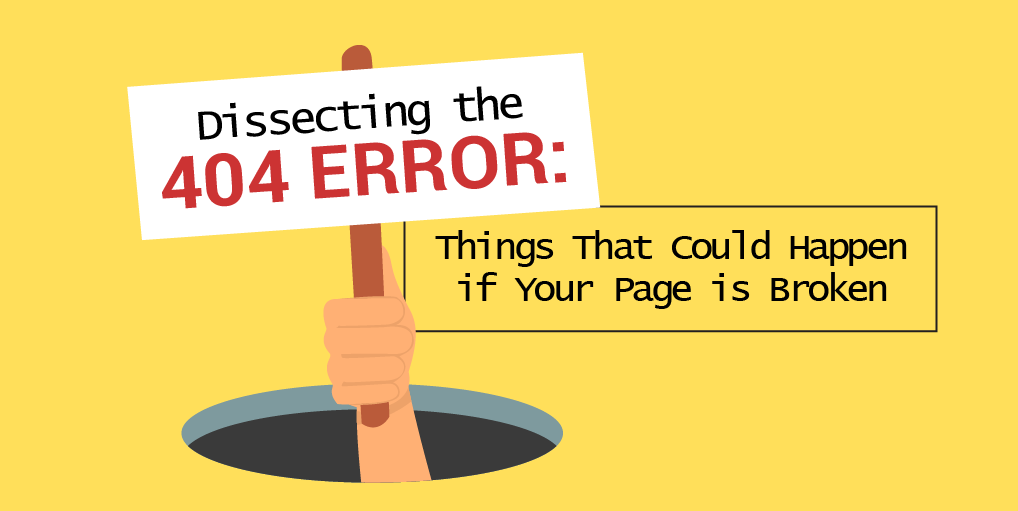Dread it and run from it, Error 404 pages will still pop up on your site at one point or another, and for different reasons. It’s difficult to avoid this, especially for websites where content is constantly changing or being updated. It’s also common to see these pages when a site undergoes a large-scale redesign and the URL structure is altered.
The “404 Error” page is a response code from a server when a web browser tries to open a page that the server couldn’t locate. Despite this, not all 404 pages hurt your website. In fact, this code can be helpful when it comes to troubleshooting issues.
Google doesn’t expect you to be completely clear of any 404s. However, it’s best to get it under control. Below is an infographic that can give you a more in-depth understanding on what the 404 bit is all about, how you can fix them, and what tools you can use to resolve them.

What Happens When Your Site Has a Lot of 404 Pages?
Although not all 404s can negatively affect your website, one broken link or page can derail the hard work you’ve put into creating a valuable site or resource for your visitors. These 404 pages can have an adverse impact on your website in terms of user experience and SEO value.
Bad user experience – An excellent user experience means visitors can find anything they need on your site on their first try, without any problems. Dead-end 404s can drive visitors away. Although errors like this are inevitable, a well-designed and constructed error page can help take care of your visitor’s browsing experience.
Loss of SEO value – Each page on your site is built to stand on its own, which can be done through intensive nurturing: acquiring inbound links, social shares, and the like. Broken pages hold back the flow of your page’s “link juice,” devaluing your SEO efforts.
Google wants to deliver the best possible result to users and if they find that your site regularly serves error pages, it’s possible that specific pages from your website will see a dip in their SERPs.
Possible Solutions
The best counter-attack to keep users from landing on a 404 page is to regularly check for any broken links within your site. Track your 404 Errors through web analytics so you can see the number one perpetrator and determine what you can do to resolve the broke page/s.
You can set up a 301 redirect to ensure that visitors and search engines are redirected to the correct page. A 301 code implies that a page has permanently transferred to a new URL address. Once you’ve updated your 404 pages to 301 redirects, you can reach out to all the websites that links to it to update or remove your broken link.
You can also choose to use a 410 status. What this does, is it blocks the search engines from associating your site with a link you no longer find relevant (e.g., a product or service your site stopped selling) for a speedy removal from the search engine index.
For sites that regularly experience 404s such as eCommerce sites, you can design a user-friendly 404 Error page that clearly communicates why a visitor landed there. A clever design with a call-to-action can help keep your visitors browsing within your site. You can include a link back to your main page, your latest blog post, products and services page, and or any relevant pages to retain your visitors.
Also Read: Quick SEO Fixes: Boost Traffic - Part 2
Tools to Find and Fix 404 Pages
- Google Analytics – You can track any 404 errors with Google analytics behavior reports. Using the custom filter Behavior > Site Content > All Pages report, you’ll see how many visitors (and how often) have seen the 404 error.
- Google Search Console – If you’ve already registered your website using your Google account, you can make use of the Google Search Console (formerly ‘Google Webmaster Tools’) to crawl your site for any broken links. The tool will display all the 404 errors found. It also shows crawling statistics to see how often your site has been crawled by Google spiders.
- Ahrefs – You can simply input your website’s URL into Ahrefs’ Site Explorer, then click the “Best by links” report and filter it to include “404 not found” in the “HTTP codes.”
- Raventools – Raventools’ Site Auditor analyzes your site to pin down all the desktop and mobile SEO issues that may be harming your site’s ranking. This includes page errors like 404s.
- ScreamingFrog – ScreamingFrog’s SEO Spider tool is a flexible site crawler that allows you to inspect website URLs for any page errors. It creates a report with the found errors and URLs to fix or automatically send it to a developer.
- Dead Link Checker – This fast and simple tool helps scour both internally- and externally-linked 404 pages. Just type in the URL and press enter to run the inspection. You may choose to check a single web page or a whole site.
- W3C Link Checker – This online tool from World Wide Web Consortium (W3C) runs detailed testing on individual website pages to verify links. Like with Dead Link Checker, you only have to enter the URL and the tool will take care of all the details.
Should You Fix All 404s?
Not all 404 errors are worth fixing. If you have 404s that don’t harm your ranking or site indexing, it’s best to ignore it. Unless the page receives relevant links from external sources, high traffic, or contains a URL that leads to important pages, it’s okay to let it be.
Soft 404, for instance, tells your visitor that a page no longer exists. However, it returns a 200-level success code which tells your browser and search engines that the page is valid.
Best Practices for Resolving 404s
Use your trusted online tools to inspect and analyze your page links and review your 404s. Then, sort your 404 error pages and see which ones need immediate resolution.
For URLs that need redirecting, add 301s to it to hold the traffic it gets and to retain the acquired links. If the 404 page is permanently gone or does not have any traffic, you may label it as a 410 so Google can drop the page from its index.
Don’t panic when you find out your site has 404 errors. A good SEO practitioner needs a plan. You may also consult with an agency that offers a search engine optimization service for a more in-depth discussion about fixing your site page errors.
Best Practices for Designing a 404 Page
While search engine bots don’t care much about 404s, end-users feel the opposite way: it calls for a bad user experience, which may end up with them leaving your site and forgetting it altogether.
One way to retain your visitor is by designing a 404 error page. Despite the page telling the user that the page no longer exists, it provides instructions about how they can reach you. You can use wit and humor as well, so you can entertain and delight your website visitors along the way! This is a creative way to use 404 Error pages to your advantage. Below are examples of brilliant 404 pages that can turn any lurker into a loyal customer.
1. Lego – Displays a playful “Page Not Found” error page.
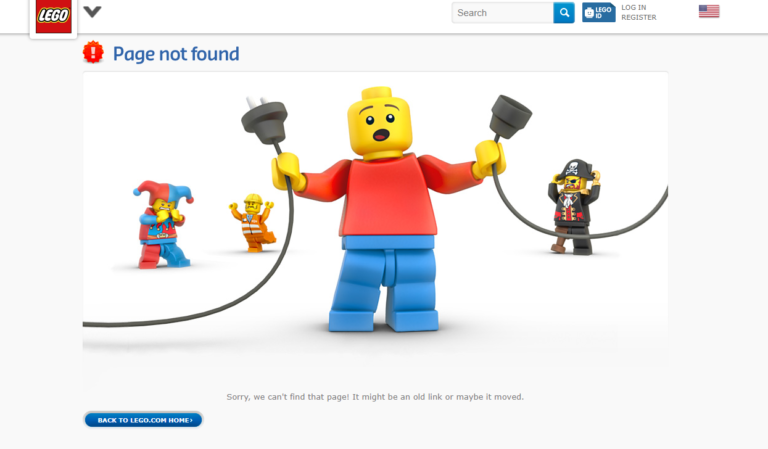
2. Airbnb – Showcases an amusing animation with helpful links.
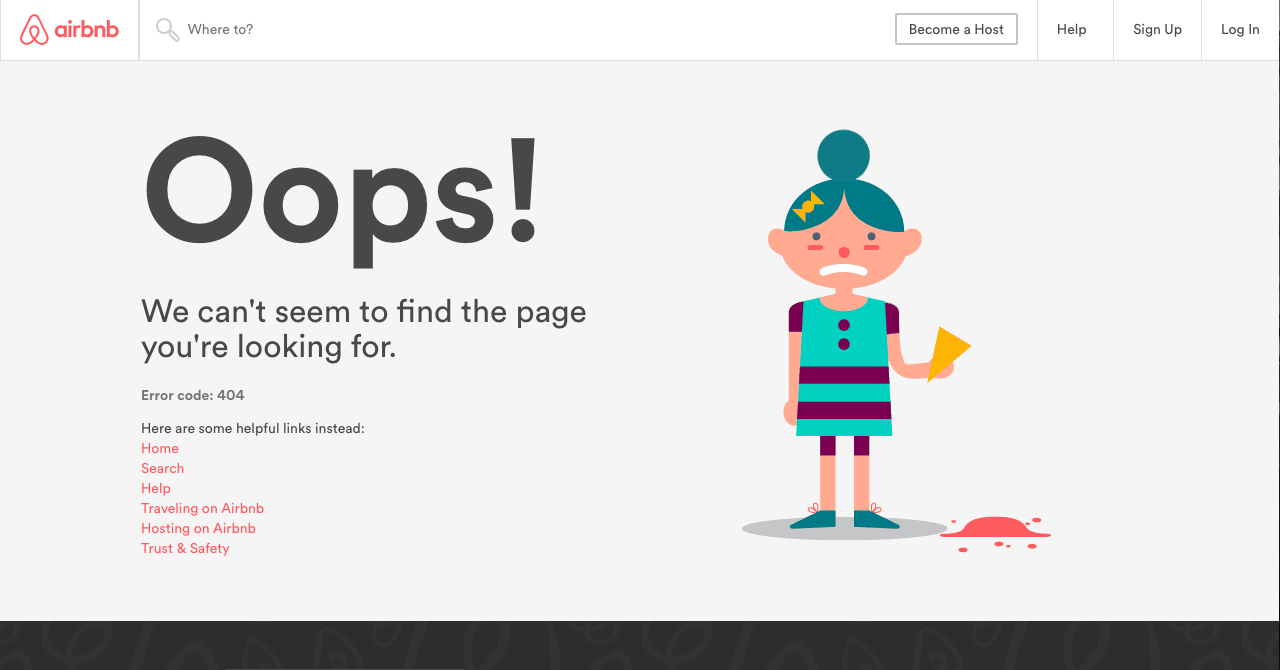
3. Hootsuite – A funny 404 headline following a list of possible reasons why the page doesn’t exist with a “Return to homepage” link.
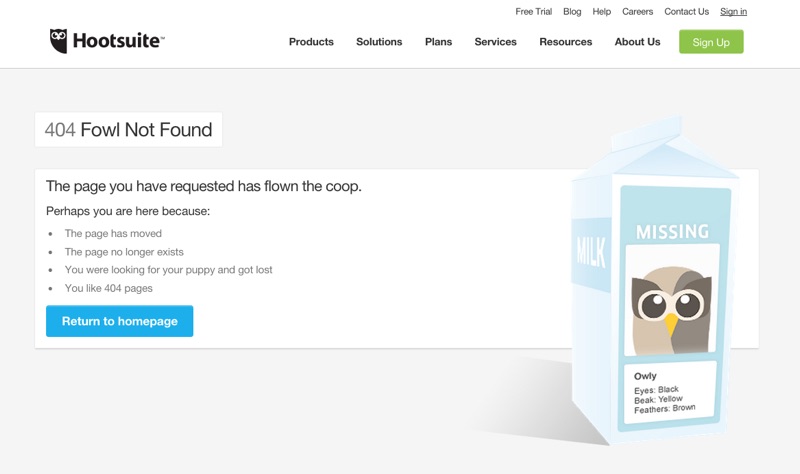
4. Heinz – Guides visitors about how to maximize the options available on the 404 page. It also contains links to popular pages.
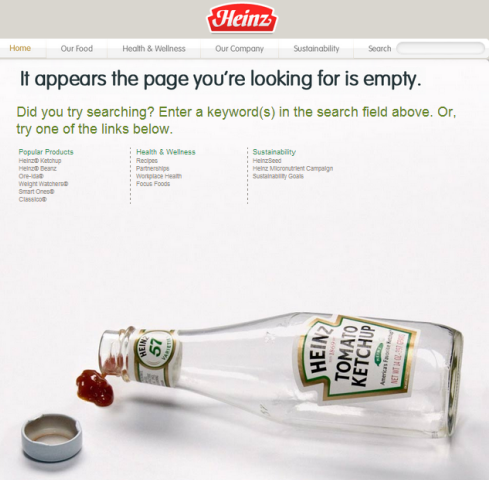
5. 9Gag – Shows a 404 Gif page that’s in-line with the entertainment site’s tone. It also features a call-to-action link to download their app instead.
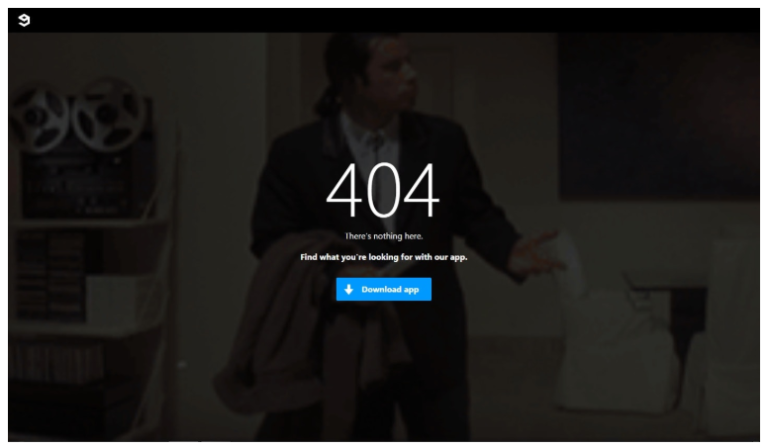
Wrapping Up
Having 404 error pages are part of having a website. Don’t fret if your site gets 404 pages since not all are harmful anyway. You can compromise and keep track of your 404 pages that gained links, high traffic, and referrals to build a better experience for the end-user.
Error pages can be frightening, but they exist for a reason: to direct visitors to the right page. With enough experience and knowledge, you’ll maintain a muscle memory that will tell you how to react to certain error pages. Soon, this will become second nature to you.



